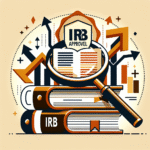
Introduction
In a world driven by data, the ability to gather and analyze information effectively is more crucial than ever. Surveys have become foundational tools in quantitative research, enabling researchers to obtain insights that shape decisions across various sectors—from academia to marketing. But the effectiveness of a survey hinges on its design. Designing Effective Surveys: Best Practices for Quantitative Research can make the difference between gathering invaluable insights and ending up with convoluted, useless data.
This guide will explore the vital elements of survey design, presenting proven strategies to enhance data quality, participant engagement, and ensure the overarching goal of your survey is met. Whether you are a seasoned researcher or a novice dipping your toes into quantitative studies, this article will equip you with actionable insights to create impactful surveys.
Understanding the Importance of Effective Survey Design
Why Surveys Matter
In social sciences, market research, and healthcare, surveys serve as critical instruments that breathe life into data collection. The effectiveness of surveys hinges on their ability to capture accurate and relevant data. Poorly designed surveys can lead to misinterpretation, skewed results, and ultimately, costly decisions.
Case Study: Coca-Cola’s Market Research
Coca-Cola once launched a new beverage based on survey results suggesting a strong interest in fruity flavors. However, the survey design failed to provide a nuanced understanding of consumer preferences. In hindsight, better structuring and question formulation could have revealed critical insights that led them to rethink the product. This is a classic example of how Designing Effective Surveys: Best Practices for Quantitative Research can save time and resources.
Step 1: Define Your Objectives
Before diving into survey design, clarify your research goals. A well-defined objective acts as the north star for the entire survey.
Setting SMART Objectives
Aim for objectives that are Specific, Measurable, Achievable, Relevant, and Time-bound. For example:
- Specific: Understand customer preferences regarding eco-friendly products.
- Measurable: Identify five key features consumers look for.
- Achievable: Aim to gather responses from 500 participants within three weeks.
- Relevant: Ensure objectives align with your business strategy.
- Time-bound: Set a deadline for analysis and reporting.
Case Study: Airbnb
Airbnb sought to understand customer satisfaction levels with its service. By setting SMART objectives, they gathered targeted feedback, leading to actionable insights that improved user experiences significantly.
Step 2: Choosing the Right Type of Survey
Different survey formats yield different types of data. Selecting the appropriate format is crucial for effective data gathering.
Online Surveys
Online surveys are widely popular due to their ease of distribution and analysis. However, they require careful consideration in terms of design to avoid participants dropping out.
Face-to-Face Surveys
These surveys can yield deeper insights through direct interaction, but they require more resources for execution.
Telephone Surveys
While useful, they often have a lower response rate due to declining phone engagement.
Table: Pro’s and Con’s of Different Survey Types
| Survey Type | Pros | Cons |
|---|---|---|
| Online | Cost-effective, rapid data gathering | Can result in lower engagement |
| Face-to-Face | Rich qualitative insights | Time-consuming |
| Telephone | Direct engagement | Declining response rates |
Step 3: Crafting Clear and Concise Questions
Importance of Question Clarity
Questions must be straightforward to avoid confusion. Ambiguously phrased questions can mislead respondents.
Open vs. Closed Questions
- Closed Questions: Useful for quantitative data, easily analyzed. Example: “On a scale of 1-5, how satisfied are you with our service?”
- Open Questions: Allow for qualitative insights but are more challenging to analyze. Example: “What improvements would you like to see in our service?”
Case Study: Google Forms
Google’s survey tool has integrated features to minimize question ambiguity, allowing for clearer responses. This design choice leads to more reliable data for analysis, showcasing the significance of effective question crafting.
Step 4: Ensuring a Logical Flow
Logical Sequence
Arrange questions in a logical order that feels intuitive to respondents. Start with demographic questions, evolve into general questions, and wrap up with specific inquiries.
Importance of Branching Logic
Using branching logic allows respondents to navigate questions relevant to them, keeping them engaged and improving response quality.
Chart: Example of a Survey Flow
- Demographics
- Age
- Location
- General Feedback
- How often do you use our service?
- Service-Specific Questions
- What features do you prefer?
Step 5: Pilot Testing Your Survey
The Importance of Pretesting
Pilot testing your survey with a small subset of your target population can help identify flaws in question phrasing, order, and overall logic.
Case Study: Market Research Firms
Leading market research firms often conduct pre-tests on surveys to fine-tune the questions. This practice minimizes bias and ensures clarity, leading to higher quality data collection during full deployment.
Step 6: Incentivizing Participation
Importance of Incentives
Offering incentives can increase response rates significantly. Consider gift cards, discounts, or entry into a raffle as effective motivators.
Case Study: Customer Surveys
Many companies offer discounts to customers who complete surveys. This tactic not only boosts participation rates but also enhances customer loyalty.
Conclusion
The art and science of Designing Effective Surveys: Best Practices for Quantitative Research are critical for gathering meaningful data. By defining your objectives, selecting the right survey type, crafting clear questions, ensuring logical flow, piloting, and incentivizing participants, you can maximize the effectiveness of your surveys.
As you embark on your survey design journey, remember that each choice you make reflects your commitment to quality research. In the end, effective surveys are not just instruments of data collection; they are vehicles for innovation and understanding. So roll up your sleeves, apply these best practices, and watch as your data transforms into insights that can drive positive change in your organization.
FAQs
1. What is the best way to ensure a high response rate for my survey?
Engage your audience with intriguing subject lines, keep the survey concise, and offer incentives for participation.
2. How can I avoid bias in my survey questions?
Use neutral language, provide balanced answer options, and test the survey with a diverse group before full deployment.
3. What is the ideal length for a survey?
Aim for 5-15 minutes. The shorter the survey, the more likely participants are to complete it.
4. How often should I conduct surveys?
Frequency often depends on your research objectives, but regularly assessing customer feedback (quarterly or biannually) can provide valuable insights.
5. Can open-ended questions work effectively in quantitative research?
Yes, open-ended questions can provide qualitative insights that complement quantitative data but require careful analysis.
By keeping these insights in mind, you’ll enhance your ability to create effective surveys that yield valuable data, ultimately driving better decision-making and understanding in your research endeavors.















